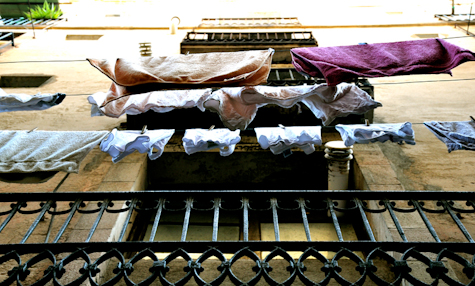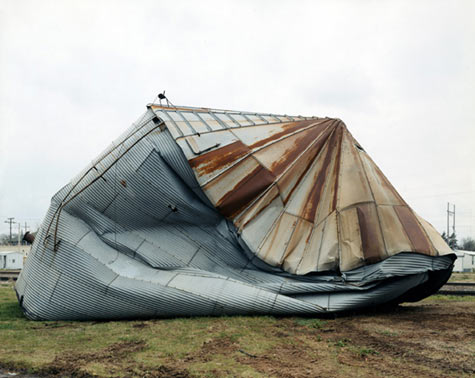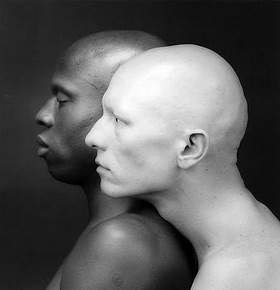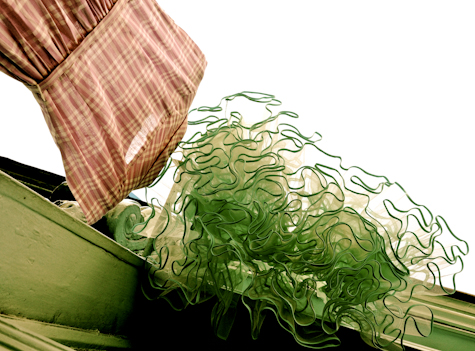
One might think of washing as monotonous, but
Sivan Askayo's 'Laundry' series is a delight: sometimes sea creatures, sometimes notes on a stave. Sivan has been to Madrid, Barcelona, London and Buenos Aires, to snap anonymous smalls.
"Laundry project begun in the vibrant alleyways of Tel Aviv's Jaffa
neighborhood and has become an ongoing project, taking me to Madrid,
Barcelona, London and Buenos Aires to snap the anonymously displayed
drying clothing. The project, that was named
'Intimacy under the Wires' reveals images of laundry both intimate and unconfined while their snoopy character makes laundry, a seemingly prosaic subject, all that more intriguing."


I spent a long time wading into
Sonja Thomsen's work. Although each of Sonia's series warrants its own feature, I decided to chose from across Oil, Water and Re:Current. I encourage viewers to visit Sonja's own site where the layout and information add to the appreciation of her work.
Thomsen has been widely exhibited across the US since graduating from San Francisco Art Institute in 2004. Currently, images from "Oil" can be seen as part of the exhibition
Earth Now: American Landscape Photographers and the Environment at the
New Mexico Museum of Art, now through August 28, 2011.
View the full screen magazine photo feature.
"The winter of 2006 diverse circumstances came together, in which oil seemed to be the unifying factor. Trying to navigate my relationship to this war, my family, and my consumption of noxious petroleum I began photographing oil. I remain captive of this elusive and complicated substance that affects our economy and politics."
"Re:Current considers time and its cyclical nature through an installation including projection, thirty-seven still images, and motion sensitive light boxes. Conceptually the installation points to time's ephemeral constancy and considers how the stillness of a photograph can represent and distort this seeming contradiction."
"Churn is a series of 7 photographs of Lake Michigan in winter. Watching the quiet surging under the surface of water is a visceral experience. I am drawn to the aggressive movement hovering under the surface and the contrasting soft palette of the water." / "Swept is a series of 12 photographs of a white river. Each image is taken seconds apart capturing the water's response as the wind so sporadically dances across it. Each moment is its own and through the sequence one can see the invisible." / "Surface is a series of 17 images. The series explores the potential of waiter and the seductiveness of looking. Small puddles of water become glass, dense fog, toxic haze, bodily fluid, and primordial soup in my viewfinder. The unfathomable potential of water to sustain life is a phenomenon that preoccupies me."

Not only are our friends at
Snap Galleries exhibiting my friend and long-time business partner
Michael Putland's Triptychs this month (nice amount of press guys!), they're also showing Iain MacMillan's Abbey Road Beatles session, and offering the rare prints as a set. Evidently, owner Guy White busted out his loupe:
"One of my favourites is a mysterious lady in a purple top who appears deep in the shadows on three of the six frames. Who was she? She probably doesn't even know that she was there that day - but someone will know who she is. During our research, we have discovered a dozen other bystanders, just like her. It's fascinating to me to think that if a different frame had been chosen as the cover, some of these other characters might have been on the album sleeve. It's also interesting to have a set of photographs with the actual frame numbers visible, so we can establish with absolute certainty the order of the images."
The full story plus an online catalogue can be viewed on
Snap's website but of course if you're in London you must go and see in person.
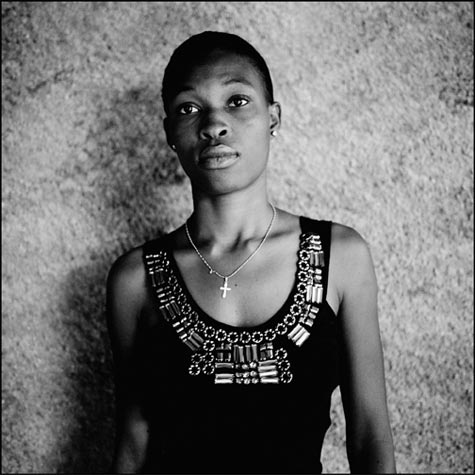
I met photographer and fellow Brit Lucy Helton at an ASMP portfolio review last year and was thrilled to bits and really impressed when she emailed me about this new venture.
Sombra Projects was co-founded by Lucy, Tiana Markova-Gold and Tom White and is "a platform for documentary photography and socially conscious art. Utilising multiple methods of distribution including community-based projects, online showcases, site-specific exhibitions, print publications and affordable fine art prints, our goal is to make documentary photography accessible to as wide an audience as possible. Working with contributors from various disciplines, we aim to present documentary-based work in innovative ways, enhancing the experience of the viewer and providing an arena in which engagement and debate are both welcomed and encouraged."
These are from their latest featured project: Fondation des Jeunes Haitiennes Optimistes, photographed by Tiana Markova-Gold with words by Jocelyne Firmin.
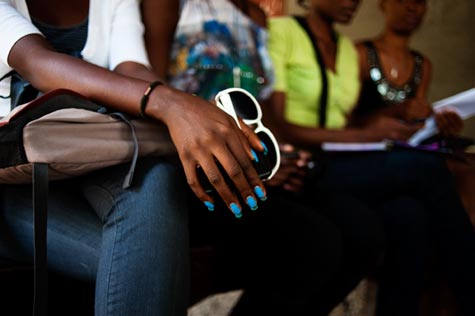 © Tiana Markova-Gold
© Tiana Markova-Gold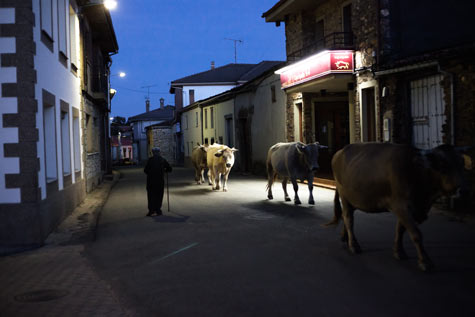 Maria de la Iglesia
Maria de la Iglesia was born in Madrid and currently lives in London. She took a Bachelor Honors Degree in Photography in Dublin Institute of Technology and a Master in Photojournalism and Documentary Photography at London College of Communication. There are several very interesting projects on her website but I was most taken by 'Pueblo'.
In Maria's words "'Pueblo' is a portrait of a Spanish village in 2010. The pictures create an intimate, sometimes absurd representation of a remote village in a period of economical crisis. Elderly people are the protagonists facing the decline of the population. The land shapes the village and its characters, suspending them in an age from long ago. This is a place where animals roam the streets and death is ever present, a place that refuses to accept modernity, preferring to stay close to the ghosts of tradition... 'Pueblo' is not only a personal journey into the absurd, but it has also become an exploration of the human condition. It is a visual and psychological observation that looks with irony and dark humour at the individuals themselves in a context of contrasts."
View the full screen magazine photo featureMain street, 2010 © Maria de la Iglesia
The opening at Sejong Museum of Art last week kicked off a two month-long exhibition there, with two more venues in Korea in the offing. 'The Exhibition of the Great Portraitist's Work KARSH' is a large and beautifully laid-out show; our fine art representative
Jason Christian sent these photos of the venue. More info at the
Visit Korea website, and a review
here.

Contemplating landscapes is oft the practice of San Francisco-based photographer
David Gardner. Follow him as he discovers fascinating and varied examples of humans, over centuries, making a point, whatever that point may be, in this series 'Marking Our Place in the World'.
"As humans we must communicate - it is what we do best. We seem hardwired from birth to do this via a complicated system using signs and symbols. But removed from our normal settings and tools, how do we compensate? What does it look like when we turn our communication skills loose on the landscape around us; why are we compelled to 'leave our mark' upon landscape, whether or not others understand its meaning or semiology?
In my photographic investigation of these ideas, the marks themselves are more relevant to me than the particular landscape they inhabit. I am interested in how our interventions impact the landscape, both natural and urban, in ways that are permanent as well as changed by time and nature. I explore themes of history, language and communication, while observing the dynamic of personal and group expression as it plays out on the landscape. We imagine mythical figures in the stars; we see the Virgin Mary in the knots of a tree; we are both compelled to make marks as well as to decipher their meanings. By looking at how we have marked the landscape through time, we can gain insight into our personal and collective history. To decline such a study is to leave to others the control of the world of meanings in which we inhabit." - David Gardner.
View the magazine full screen photo feature.
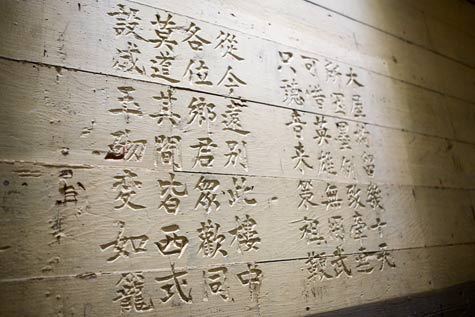
Chinese poem carved into the barrack wall at the immigration station/detention center at Angel Island:
Detained in this wooden house for several tens of days,
It is all because of the Mexican exclusion law which implicates me,
It's a pity heroes have no way of exercising their prowess.
I can only await the word so that I can snap Zu's whip.
From now on, I am departing far from this building.
All of my fellow villagers are rejoicing with me.
Don't say that everything within is Western styled.
Even if it is built of jade, it has turned into a cage.
Images © David Gardner
© George Tice
AIPAD Photography Show is something I heartily enjoy and have been going for as long as I can remember, spending hours browsing vintage and contemporary work and seeing friends and colleagues. The move to the Armory was a huge bonus, not least of all because you can now get an espresso and a decent (albeit $10) sandwich.
My first stop was with
Paul Amador. I smiled drolly at his 19" print of Arnold Odermatt's 'Buochs, 1965' while we nattered, then turned my back for five minutes and he'd sold it. Paul also had some of Robert Voit's equally-entertaining '
New Trees'.
June Bateman had three stunning prints by
Michael Massaia and I overheard people wondering about his technique - the platinum prints literally sparkle.
There are always vintage classics in abundance and I could spend days just rifling through the stands for Doisneau, Abbott, Winogrand, Bresson - images of which I never tire. I was embarrassed to not have been familiar with Builder Levy's work on New York and the Boroughs in the 1960s-80s. Mapplethorpe was the first photographer I fell in love with back when I was in my late teens; I adore his portraits and his flowers and would have happily taken home Patti Smith curled up against a radiator.
Just as exciting as all the eye candy is running into lots of interesting people. I represent the
Estate of Yousuf Karsh as a member of the
American Photography Archives Group and count wonderful people such as Mary Engel (
Ruth Orkin,
Morris Engel) and Victoria Haas (
Ernst Haas) among my associates. Both of them were in a flurry. Jennifer and Lisa Tice were there and introduced me to their sprightly dad,
George Tice, who was standing in front of a large gorgeous print of his, 'Petit's Mobile Station' from 1974, at
Peter Fetterman. It was the first time I was meeting Mr. Fetterman and I learned we share a home town in North London.
More APAG people there and I ran into the walking resource
Leslie DiRusso who was with
Barbara Nitke, so that was a thrill. Then there's always the formidable ladies who are my Karsh associates at the
Boston MFA leading a large group of people in a tour of the galleries. Another flurry. I managed to punctuate the flurries with a lunch with my favourite Missouran photographer
Mark Katzman, a successful commercial shooter and photographic-process-fetishist and font of knowledge, and a cuppa with compatriot
Louisa Curtis, old mate, photo consultant and industry vet.
The most bizarre thing I saw was a woman with a huge shaggy dog. One gallerist quipped "She must be very wealthy."
© Richard Renaldi
© Arnold Odermatt
© Robert Mapplethorpe
© Michael Massaia

"
Aperture Gallery and sepiaEYE present 'Wind', a solo exhibition by internationally acclaimed Korean photographer Jungjin Lee featuring twenty-five stunning panoramic landscapes. A limited-edition artist book, as well as the artist's first trade book, co-published by Aperture and Sepia, accompany the exhibition. Beautiful in their composition and physical execution, Lee's images present metaphors for an interior state of being and the forces that shape it. Lee's landscapes are imbued with an elemental vastness, at once powerful and serene. The Wind exhibition will coincide with the annual Asian Contemporary Art Week (ACAW) festivities held in New York. Museums, galleries, curators, and artists will be involved through the ten-day run of the festival."
Opening reception, March 24th. aCurator has the hots for this piano photograph, if you're buying.
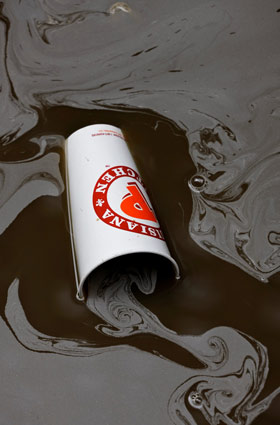
Sometimes simplicity is just as refreshing as a hot cup of coffee.
David Joseph showed me his work at a portfolio review explaining how the series of forgotten coffee cups was inspired by David's donations to auction for the
Design Trust for Public Space in NYC.
"I
realized that New Yorkers, no matter their socio economic status, were
leaving their tags all over the City. This is the new graffiti, and
whether it is City Bakery, Starbucks, or Jacques Torres the city is
covered in beautiful litter left by multi-taskers who always think they
can do one more thing. I hope these images, like all of my images,
challenge people to reconsider what they see everyday."
Better known for his luxurious and rich architecture photography, these are light relief and a statement on the nature of our lack of interest in our environment. We all live so up close and personal in NYC, how is it we care so little about litter?




